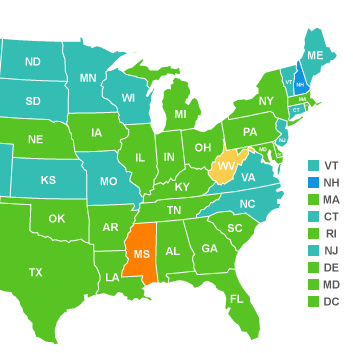To learn more about the data, we asked a few questions to Dr. Lydie Lebrun-Harris, a senior social scientist in the Office of Epidemiology and Research at the Health Resources and Services Administration’s Maternal and Child Health Bureau (HRSA MCHB). HRSA MCHB funds and directs the annual National Survey of Children’s Health.
The Health Resources and Services Administration’s National Survey of Children’s Health includes a wide range of data on the health of children ages 0 to 17. Among other topics, the survey provides obesity rates for youth ages 10 to 17. The newest iteration, which combines data from the 2016 and 2017 surveys, was released in October. Some key findings include:
Nearly one in six youth nationwide has obesity. The national obesity rate for youth ages 10 to 17 is 15.8%.
There is a wide range of variation in obesity rates at the state level. Mississippi has the highest rate, at 26.1%, while Utah has the lowest, at 8.7%.
Racial and ethnic disparities in obesity rates persist. Nationally, black youth have the highest obesity rate (22.5%) followed by Hispanic youth at 20.6%, white youth at 12.5%, and Asian youth at 6.4%.
